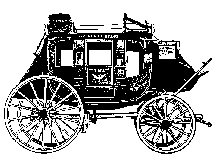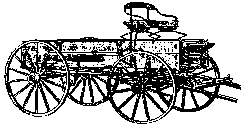8ARTICLE
Tribe Considers Sakakawea
(Sacagewea / Sacagawea / Sacajawea) Spelling
Lewiston Morning Tribune
Associated Press



This page was last updated: February 1, 2010

Copyright © 2000 Larson Century Ranch, Inc. ~ All Rights Reserved
P. O. Box 1982
Clarkston, WA 99403
Telephone: 509-758-5445
FAX: 509-758-5701
E-Mail: Sales@LarsonCenturyRanch.com

Web Design: Design Carte
BISMARCK, N.D. - The Three Affiliated Tribes may change the spelling of Sakakawea, the American Indian guide who accompanied explorers Meriweather Lewis and William Clark. She is known as Sacagawea in Idaho and elsewhere.
Supporters of the spelling change hope the state of North Dakota will follow suit.
North Dakota tourism and history offcials say the spelling is part of the story's allure and changing it might be difficult and costly.
"We often talk about one of the great parts of the mystery of Sakakawea is there was not written (Indian) language, and we actually know very little about her," said Rachel Retterath, Lewis and Clark coordinator for the state Tourism Division.
Various spellings exist for the woman who joined Lewis and Clark in what is now North Dakota nearly 200 years ago and guided them to the Pacific Northwest. The most common is Sacagawea.
Lewis and Clark, in their journals, spelled the guide's name several different ways. The U.S. Mint, which makes a dollar coin featuring a likeness of the guide, uses the Sacagawea spelling.

In North Dakota, where her statue adorns the state Capitol grounds and the state's largest lake carries her name, she is called Sakakawea.
The Three Affiliated Tribes Business Council earlier this week endorsed the more common spelling of Sacagawea, saying it most closely represents the Hidatsa pronunciation for the Indian name "Bird Woman".
Some tribal elders said they were not consulted, and Three Affiliated Tribes Museum administraator Marilyn Hudson said the issue needed more study.
Amy Mossett, the tribe's tourism director, said the council has given her 60 days to gather comments from tribal elders and descendants of Sakakawea and bring back the resolution.
Retterath said the different North Dakota spelling of Sakakawea gives historical officals an opportunity to talk to curious tourists about the many mysteries of the woman, including when she died, where she is buried and whether she was Hidatsa, Shoshone or possibly even Comanche.
She said if the tribe does change the Sakakawea spelling, the state likely would follow the lead of the State Historical Society of North Dakota. Claudia Berg, director of the society's Museum and Education Division, said a change in the spelling would not be ruled out, but it would be difficult.
The sheer number of signs, businesses and pieces of literature that carry the name Sakakawea would make a change daunting.
As for Lake Sakakawea, a name change would take an act of Congress, said Paul Johnston, a spokesman for the U.S. Army Corps of Engineers' Northwestern Division, which operates North Dakota's Garrison Dam.
"The reality of it is, no matter how you spell it, people are going to have a difficult time pronouncing it," Mossett said.